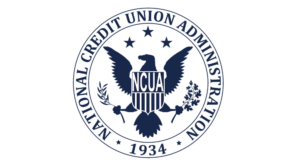
8 Highest Rates For Savings Accounts Online

8 Highest Rates For Savings Accounts in the USA
Grow your money faster with a high rate savings account
Our editorial team is independent and objective. To help support our review work, and to continue our ability to provide this content for free to our readers, we receive compensation from the companies that advertise on the CreditMashup site. This site does not include all companies or products available within the market.
We also include links to advertisers’ offers in some of our articles; these “affiliate links” may generate income for our site when you click on them. The compensation we receive from advertisers does not influence the recommendations or advice our editorial team provides in our articles or otherwise impact any of the editorial content.
While we work hard to provide accurate and up to date information that we think you will find relevant, CreditMashup does not and cannot guarantee that any information provided is complete and makes no representations or warranties in connection thereto, nor to the accuracy or applicability thereof. Here is a list of our partners who offer products that we have affiliate links for.
As of July 2025, the national average interest rate for savings accounts is 0.38%. However, there are many banks and credit unions that offer savings account with high interest.
So, if you’re looking to earn the most interest on your savings, it’s important to shop around and compare HYSA up-to-date, current rates.
We’ve done some research and compared banks and credit unions with the best savings rates in the USA. What we found is online banks often offer the highest rates for savings accounts.
Best savings accounts rates in July 2025

Live Oak Personal Savings
• Earn 4.10% APY on all balances
• No monthly maintenance fees
• Online account management
• Customers who deposit $20,000 by 3/31/25 and maintain it for at least 60 days, will earn a $300 bonus.
APPLY NOW

UFB Portfolio Savings
• Earn 4.01% APY on all balances
• No monthly maintenance fees
• Online account management
• FDIC insured up to $250,000
APPLY NOW

Axos One Savings/Checking
• Earn 4.66% APY on all balances
• Must maintain $1,500 daily balance
• Must receive a monthly $1,500 direct deposit
• No monthly maintenance fees
• FDIC insured up to $250,000
APPLY NOW

CIT Bank Savings Connect
• Earn 3.90% APY on all balances
• Minimum deposit is $100
• No monthly maintenance fees
• Online account management
APPLY NOW

CIT Bank Platinum Savings
• Earn 4.00% APY on all balances
• Minimum deposit is $5,000
• No monthly maintenance fees
• Online account management
APPLY NOW

Upgrade Premier Savings
• Earn 4.02% APY on balances of $1,000 or more
• No monthly maintenance fees
• Online account management
• FDIC insured up to $250,000
APPLY NOW

Quontic Bank High Yield Savings
• Earn 3.85% APY on all balances
• $100 minimum opening deposit
• No monthly maintenance fees
• Online account management
APPLY NOW
How compound interest works with high-interest savings accounts
Compound interest grows upon itself. Think of it as the “snowball effect.” When a snowball rolls down a hill, it continuously picks up snow – the bigger the snowball gets, the more snow it packs on – it compounds during its travel down the hill.
A high-yield interest account can be looked at in the same way.
Interest is earned on money that previously earned interest. This cycle leads to increasing interest as balances get bigger and bigger.

High-interest savings accounts make you money
Compound interest is the key to how high-interest savings accounts make you money. Currently, the average annual percentage yield across all savings accounts is just 0.38% APY, according to the Federal Deposit Insurance Corp with some big banks, Chase, paying as low as 0.01%.
High-interest savings accounts currently earn around 10 times more than the national rate. That makes a big difference, for example:
- Deposit $10,000 in a savings account that earns compound interest at 0.38% APY. Assuming interest compounds on a monthly basis, in one year you’ll have made $38.00.
- Deposit $10,000 in a savings account that earns compound interest at 4.50% APY. Assuming interest compounds on a monthly basis, in one year you’ll have made $450.
If you’re not earning that “interest-on-interest” (compound interest) in a high-yield savings account, you’re leaving money on the table.
How much high-interest savings accounts earn
Example: Check out how much an initial deposit of $1,000 with $100 monthly deposits will earn over 20 years with a 5.00% APY.

The figure above breaks down how much different savings accounts can yield using an initial deposit of $1,000 into an account with a 5.00% APY, plus adding $100 every month and never incurring any fees.
The Quontic Bank Money Market Account earns 4.25% APY while also allowing easy access to your funds with a debit card. It’s not quite 5.00% APY, but still above 4.00% APY.
If you keep saving for 20 years, you’ll have approximately $43,816 in your account (total contributions: $25,000) and you’ll have made $18,816 in interest. That’s a nice chunk of money earned in interest.
Restrictions on savings accounts
While savings accounts are the most reliable and safe investments, they do have a few restrictions. Many high-yield savings accounts have minimum balance requirements and penalize you with fees or lower APYs if you don’t maintain that level of investment.
Plus, due to a Federal Reserve Board rule known as Regulation D, account holders are only allowed to withdraw or transfer money six times per month without paying a penalty. Regulation D limits the number of certain types of withdrawals or transfers that can be made from savings accounts or money market accounts.
However, banks are no longer federally required to limit savings account withdrawals to six per statement cycle under Regulation D. The Federal Reserve eliminated this requirement in April 2020, allowing institutions to offer unlimited withdrawals if they choose
But, there are multiple banks that choose to enforce their own limit of six withdrawals or transfers per month from savings accounts, often charging a fee for going over that amount or even changing the account type, but it depends on each institution’s policies.
It’s important to note that if the six-transaction limit is imposed, it only applies to certain types of transactions and does not limit other types of account activity, such as deposits, ATM withdrawals, or in-person transactions at a bank branch.
The purpose of Regulation D is to encourage consumers to use savings accounts for their intended purpose of saving money, rather than as a transaction account. Additionally, the regulation helps banks manage their reserve requirements, which are the funds that banks are required to hold in reserve to cover potential losses.
By limiting the number of transactions from savings accounts, banks are better able to manage their reserve requirements and ensure their financial stability.
Benefits of a Savings Account
Having a savings account can provide several benefits, including:
Emergency fund: A savings account can provide a safe place to save money for unexpected expenses or emergencies. Having an emergency fund can provide peace of mind and help you avoid high-interest debt when unexpected expenses arise. Check out these saving money tips to help make building an emergency fund simple.
Earn interest: Savings accounts pay interest on the money deposited, which can help your savings grow over time. Earning interest on your money is one of the main benefits of having a savings account.
Easy access to cash: Unlike a certificate of deposit (CD) or other long-term investment, money in a savings account is generally easily accessible when you need it. This can be helpful for short-term savings goals, such as saving for a vacation or a down payment on a house.
Low risk: Savings accounts are typically considered low-risk investments because they are FDIC-insured, which means that your money is protected up to a certain amount if the bank fails.
Goal-oriented savings: A savings account can help you stay motivated to save for a specific goal. You can set up automatic transfers to your savings account to make saving easier and more consistent.
No ATM Card. Some savings accounts don’t offer an ATM card. But if your goal is to build wealth and earn as much compound interest as possible, you don’t want to make too many withdrawals anyway.
Overall, a savings account can provide a safe and convenient way to save money and help you reach your financial goals. Learn about No-ChexSystems Banks if you are unable to open a savings account.
Saving vs Investing
Saving and investing are two different approaches to managing your money, and both can play an important role in achieving your financial goals.
Saving money is the act of setting aside money for short-term needs or emergencies. Saving typically involves putting your money into a low-risk savings account, money market account, or certificate of deposit. Savings accounts offer little or no risk, and typically pay low interest rates, but the money is easily accessible when needed.
Investing, on the other hand, involves putting your money into assets such as stocks, bonds, mutual funds, real estate, or other investments with the goal of earning a return over the long-term. Investing typically involves more risk than saving, but also offers the potential for higher returns. Investments can be used to build wealth over time, achieve long-term financial goals such as retirement, or generate passive income.
Both a savings and investing accounts are generally taxable. But here are some key differences between saving and investing
Risk: Saving is generally considered low-risk, with minimal potential for loss, while investing carries more risk, with the potential for significant gains or losses
Returns: Saving typically offers low returns, while investing can offer higher returns over the long-term.
Liquidity: Savings accounts are generally easily accessible and liquid, while investments may be harder to sell or access quickly.
Time horizon: Saving is typically geared toward short-term goals, while investing is geared toward long-term goals.
Diversification: Investing can involve diversifying your assets to spread out risk, while saving usually involves keeping money in a savings account or CD.
Investing can be complicated but it’s also one of the quickest and most effective ways to make your money grow. If you’re new to investing take a little time to learn how to research and evaluate potential stock purchases, dividends, mutual funds, exchange-traded funds (ETFs) and other investment vehicles.
You can invest on your own but it’s probably best to start with a broker. But remember that brokerage firms charge different amounts to use their services, and the fees may vary by how much you have in your accounts. Fees can eat up a big chunk of your savings, so be sure you shop around to find the fee schedule that costs you the least before high-risk investing.
It’s important to keep in mind the risks that come with investing in stocks. Many people saw their investing portfolios lose half their value or more during the Great Recession, but those who held on saw their investments recover and then some within a few years.
Few investments come without risk unless it’s a high-yield savings account. The ones with the greatest risk stand to bring the greatest gains, but also the greatest loses.
Content
Who We Are
Get In Touch
- Email: contact@creditmashup.com
- Phone:
- Hours: Mon-Fri 9:00AM - 5:00PM
© 2025 All Rights Reserved.









